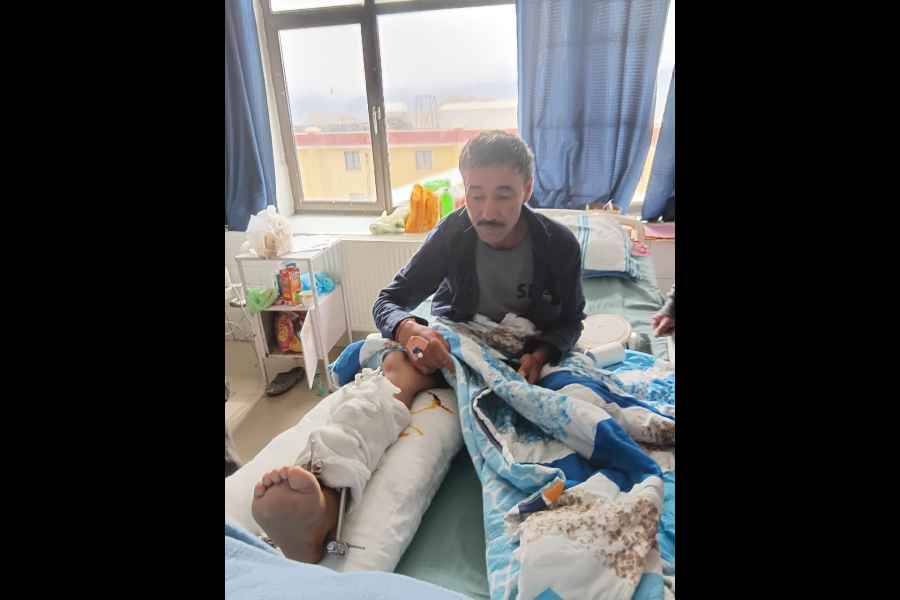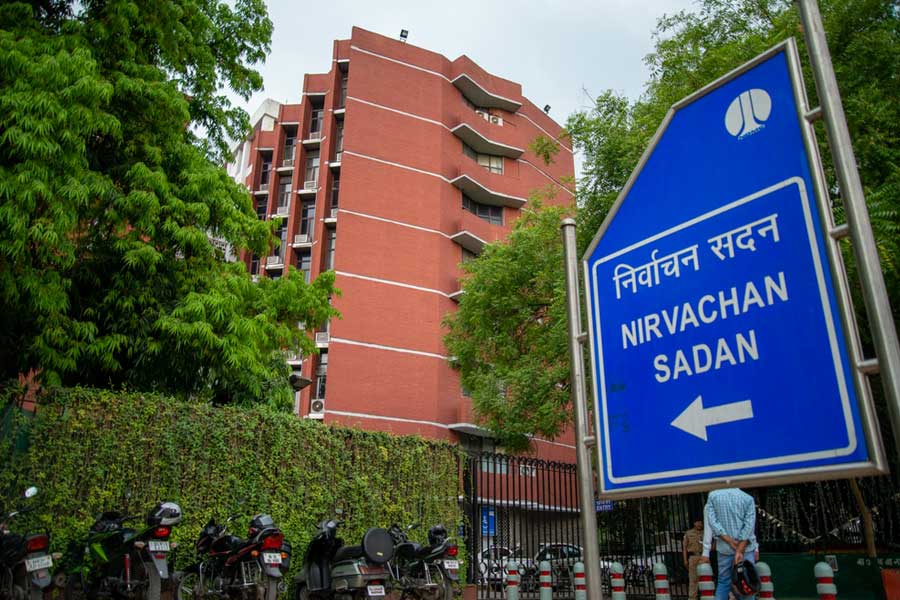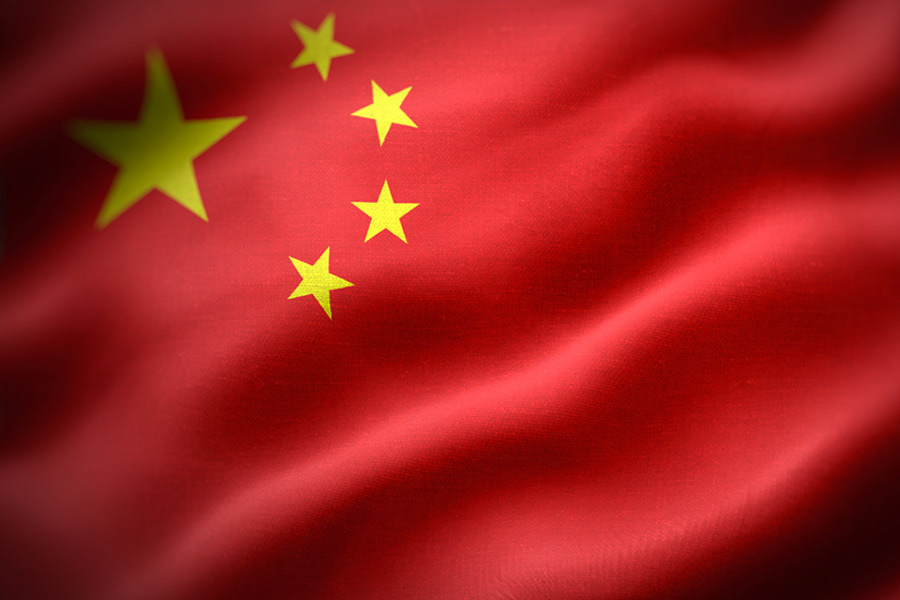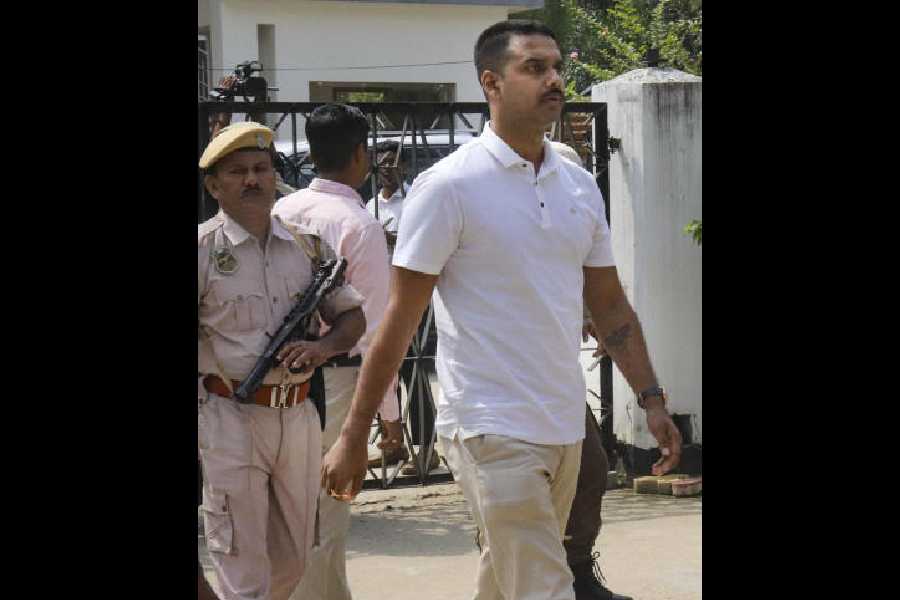.jpg)
In 2017, Shawna Pandya shot into the spotlight when it was revealed that the Canadian citizen of Indian origin was going to be the third Indian woman to fly to space. The 33-year-old practising physician based in Alberta, Canada, quickly clarified that she hadn’t been assigned to a space mission, but worked as a citizen-scientist astronaut with projects related to space like Possum and PHEnOM, whose “ultimate goal is to send citizen-scientist astronauts to space”.
Currently, Shawna, along with five fellow citizen-scientist astronauts, is parked in the Mars Desert Research Station in Utah in the US to research and simulate life on the Mars surface.
With the TV show Astronauts —Toughest Job In The Universe beaming on Sony BBC Earth, t2 chatted with Shawna on her work and what goes into being an astronaut…
What does your work as a citizen-scientist astronaut involve?
As a citizen-scientist astronaut, I work with Project Possum (its description on its website read: a 501c3 research and education program conducting upper-atmospheric and astronautics research while offering immersive astronaut training) and Project PHEnOM (a microgravity human research program that trains and utilises citizen scientist-astronauts and mission support specialists to carry out its mission objectives). The ultimate goal of both these programmes is to send citizen-scientist astronauts to space. There’s been no mission yet. But that’s not to say I don’t love every minute of what I do. I am just back from testing emergency spacesuits in Connecticut for Possum and now I am on my way to be part of a simulated Mars mission with PHEnOM. I am very excited to be part of these missions that not only explore space, but also work to furthering our knowledge about space.
You are a physician by profession. What is it about space and space travel that intrigued you so much?
Everything, actually! It’s been a lifelong journey for me. I have loved space for as long as I can remember. Ever since I was in Grade 7, everyone knew that all my dreams were connected with going to space. My brother and I would go camping and we would just look at the night sky, see the stars and the Milky Way. It’s been a passion for life, fanned further by role models like Roberta Bondar who was the first Canadian female astronaut in space.
Growing up, I would eagerly read up anything related to space. In the 1990s, a commemorative stamp related to the Canadian astronaut programme was released, and that propelled my interest further. Though I started focusing on my immediate career plan, that is medicine, my passion for space never really went away. I would always look for ways to get involved, including doing my Masters at the International Space University (in France). I also worked on a research programme at the Johnson Space Center at NASA (in Houston). That kind of really changed things for me because the Canadian astronauts who were working there at that time were very gracious with their time and so ready to answer questions. That just brought my passion back one hundred per cent. Rather than one single moment that sparked off my interest in space, it’s been a journey of several moments that have reinforced that this is what I love and this is what I want to do.



What is the kind of physical fitness and mental make-up that one needs to travel to space?
Both physical and mental capabilities are equally important. Your interpersonal skills also come into play because everything in space is a team effort. You have to be good with people… you have to know when to lead and when to follow.
The need for physical and mental resilience is paramount. When we were testing spacesuits in Connecticut this past week, the mission was to simulate an emergency situation in a spacecraft where we were in our spacesuits and needed to get out in an emergency landing in the ocean or land with a parachute in the middle of the ocean and then make our way to a life raft. In the second scenario, I managed to do everything and was in a situation where I had to get out of the spacecraft, fighting not only the weight of water, but the weight of my spacesuit as well. I like to think I am physically fit, but that task took every ounce of physical strength I had and I had to work very hard to keep myself mentally strong and ignore the urge to give up. Such situations always make you humble and make you realise that in this job, there are certain things that will go right and some that won’t.
What kind of fitness regimen do you follow to pursue this passion, often described as ‘the toughest job in the universe’?
Physical fitness is very important. I train regularly. I am a trained martial artist and also do Taekwondo and Muay Thai. I get some cardio at the gym and also go for walks and my run. Being in space isn’t easy on the body and the astronauts who stay for long at the International Space Station will vouch for that. You tend to lose muscle mass as well as strength in space, leading to muscle atrophy. At the agencies I work with, we are taken through the whole regime of pre-flight conditioning and post-flight rehab.
I think the mental resilience aspect comes into play much more than the physical. When you pursue space travel, you are away from your family for long periods, almost to the point of helplessness. This job is all about high risk, high rewards. There are so many things that can go wrong, whether it’s an ammonia leak or a fire in the cabin… you can’t simply leave everything and go outside, that’s not an option (laughs).
You also have to have the ability to function in high-pressure environments and take split-second decisions. And then, you have to accept the fact that despite doing all the right stuff, things may not go to plan. The memory of major space disasters like (Space Shuttle) Columbia that claimed Kalpana Chawla’s life is still fresh in the memories of anyone who takes space travel seriously. These disasters not only affect astronauts but every single person who works in putting these missions together.
It’s a male-dominated job. What will it take to make more women come forward and pursue space travel?
You are right that historically, men have been more represented in space. But we are starting to do a better job. Of the two candidates that were selected by the Canadian Space Agency this past year, one is a woman called Jennifer Sidey. The new NASA Masterclass has a good representation of women. My graduating class at Possum in 2015 had few women, but the class that I am now working with in Connecticut has a male-female representation of 50-50. PHEnOM is 50-50 as well. So it’s getting better. But my advice to anyone who feels under-represented in any field is that, ‘Don’t let that stop you’. No matter what your gender or ethnicity is, work hard and then act like you belong here… because you do.
Have the stories and struggles of Kalpana Chawla and Sunita Williams, both Indian-origin scientists who have been on NASA space missions, been an inspiration to you?
When you look at the skills, professionalism and fortitude that both these women have shown, you can’t help but be inspired. Especially when Sunita Williams does something like running the Boston Marathon at the ISS (International Space Station). When you look at Kalpana Chawla’s achievements, you realise that it’s one less human being that we now have on this planet who was so talented and amazing.
Do you have family in India?
Yes! I am lucky enough to be able to go back to India every five years. I went there last February. Much of my extended family — aunts, uncles, cousins and until recently, my grandmother — lives in Mumbai, and for me, it’s always like going back to my second home. I love spending time with my family and five years is too long for me to be away (smiles).
When you aren’t saving people or working in simulated Mars missions, are you as regular as the rest of us?
(Laughs) I am a pretty normal girl. I need to sleep, eat and spend time with my loved ones and do all I can to make the world a better place. I would like to think I’m pretty down to earth.

KNOW SHAWNA
Age: 33
Hails from: Alberta, Canada
Other achievements:
- Is resident physician, enhanced surgical skills at Prince Albert Parkland Health Region.
- Co-founder of CiviGuard, Inc., a Silicon Valley start-up.
- Published author on telemedicine for the developing world, space technology spin-offs for medical benefit and neuroArm, he world’s first intra-operative, MR-compatible image-guided robotic arm for neurosurgery.
- Instructor at EVA 101 Wilderness and Space Medicine that teaches Possum citizen-scientist astronauts the fundamentals of space medicine, wilderness medicine, as well as leadership, teamwork and decision-making in high stress situations.
Priyanka Roy

.jpg)








